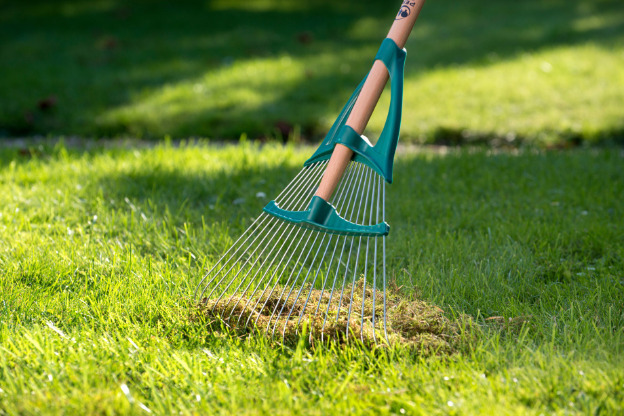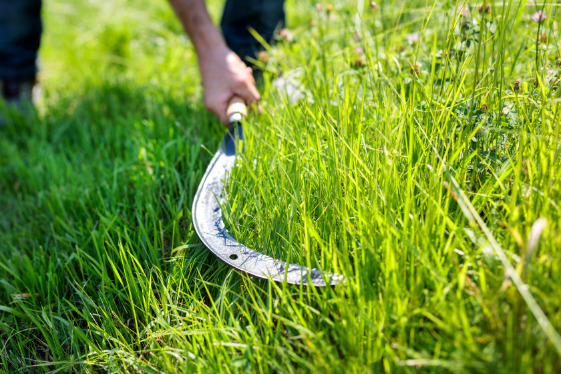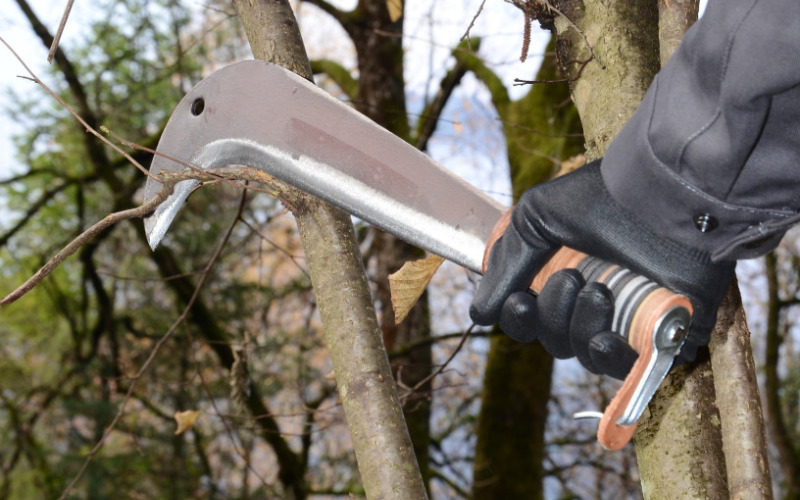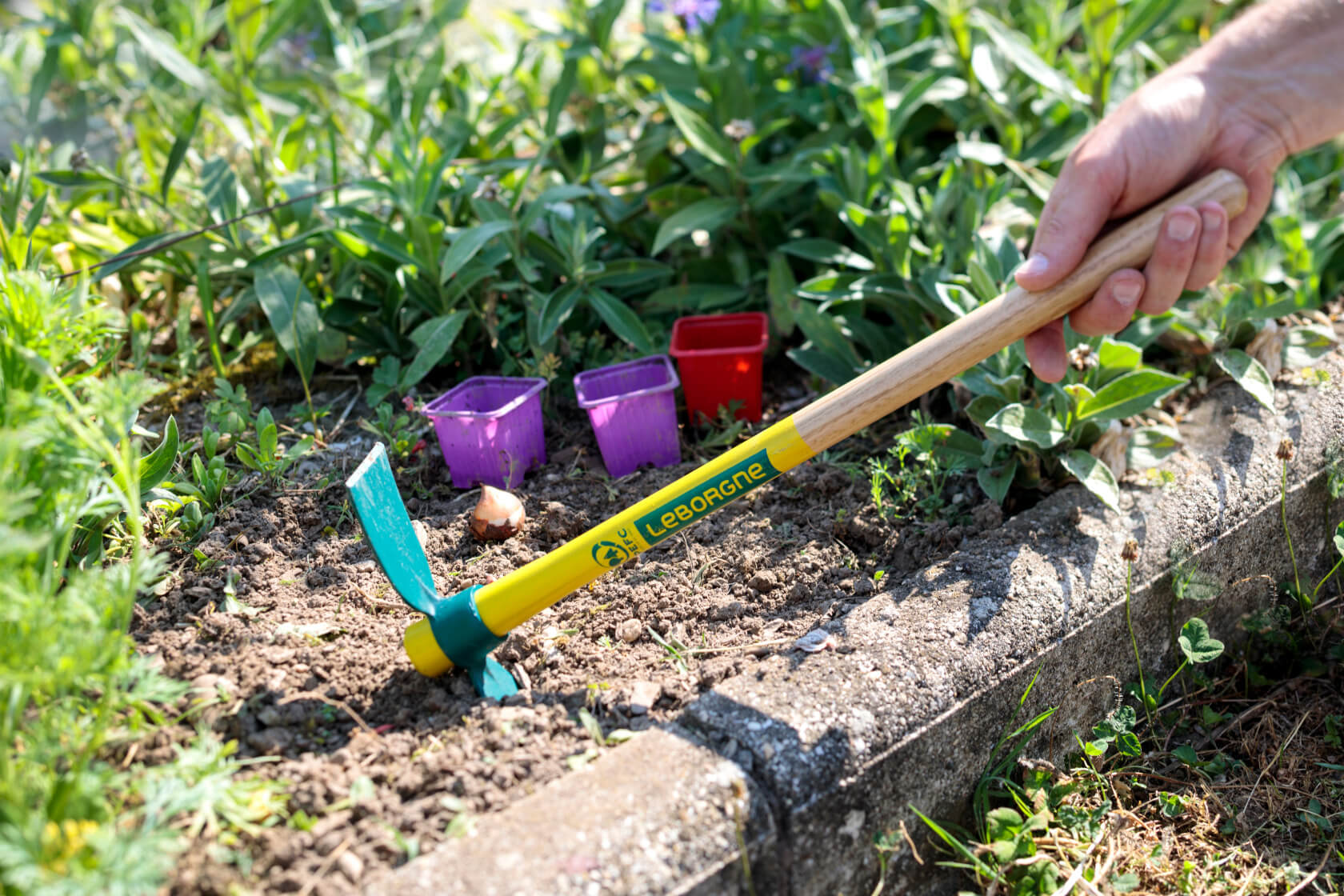Maintain lawns and grassy areas
In your garden there are lovely stretches of grass, like lawns where you enjoy playing or simply lying lazily.. . in order to enjoy them to the full in summer or to maintain them when autumn comes, generally speaking, gathering up grass cuttings after mowing, dead leaves and plant waste are jobs which need to be done.
Leaves which have been contaminated by parasites must be destroyed; others can be kept on one side to cover the base of some plants which need protection from frost in winter and to make compost.
Raking and gathering dead leaves
Instead of traditional rakes or metal lawn brooms with flat or round tines which are never strong enough and not very effective, make your life easier by using a XL lawn rake or the Xfil leaf rake. Robust, with a good wide span for working, light and sufficiently forceful if pressed on (they are designed with this in mind). They are polyvalent and can replace all your old tools.
They have an extra feature as well, their large surface area is essential for gathering waste. Note that the Xfil leaf rake presents the great advantage of having specially shaped tines to prevent leaves from sliding upwards. You won’t be able to manage without them!

Mowing long grass
You have just bought a house with a garden. But for the moment the garden is more like a field where long grass and other unwanted scrub flourish.
Depending on the size of the area which needs mowing and the type of field you can choose between :
The grass scythe for large grassy areas
The scrub scythe for a field of brambles and other scrub
The grass sickle for small, grassy areas, along fences and around trees
The scrub sickle for small areas, overgrown with scrub and brambles.

Pruning woodland, clearing paths and slopes
In your grounds there is delightful woodland crisscrossed by charming paths. If only they were maintained !
The billhook will enable you to prune the lower branches and let light brighten the underwood and clear the paths.
The hook with 1 or 2 edges will allow you to remove branches from tree trunks up to head height and clear slopes.
Both the billhook and the hook can also be used for shaping fruit trees for example.

Maintain a flower bed or a rockery
Maintain a flower bed or a rockery
Traditional garden tools, which were originally designed for the vegetable garden, are not really suitable for making flower beds and rockeries.
It is true that the larger tools are too wide and do not enable you to reach between shrubs easily, without damaging plants which are already in place. As for the smaller tools for the gardener, their handles are too short and the iron head is not strong enough to endure the strain encountered in maintaining flower beds and rockeries.
Leborgne, therefore has created the Compact range of 15 tools, with iron heads of a size and strength (the majority are forged and hardened) specially adapted to cultivating flower beds and rockeries.
In this range, 11 are fitted with standard handles (between 90cm and 1.30m) used standing up and holding in both hands, and the other 4 have short handles, 50 cm long, which allow the gardener to work with more precision, in a crouching position and holding the tool in one hand.
From the point of view of ergonomics as the working surface of Compact tools is narrower, the tool is lighter and the amount of effort required is not as great as that for traditional tools. So the tools do not tire the user so much and this contributes to the pleasure of gardening.
In addition to the tools in the Compact range, you will find the forged shank trowel, the bulb transplanter and the mini-rotogrif all very effective for planting bulbs or planting in pots or in small flower beds.

